November 18, 2024 · 9 min read
Aligning Educational Goals with Governance Using Meeting Management Platforms

Shaimaa Badawi
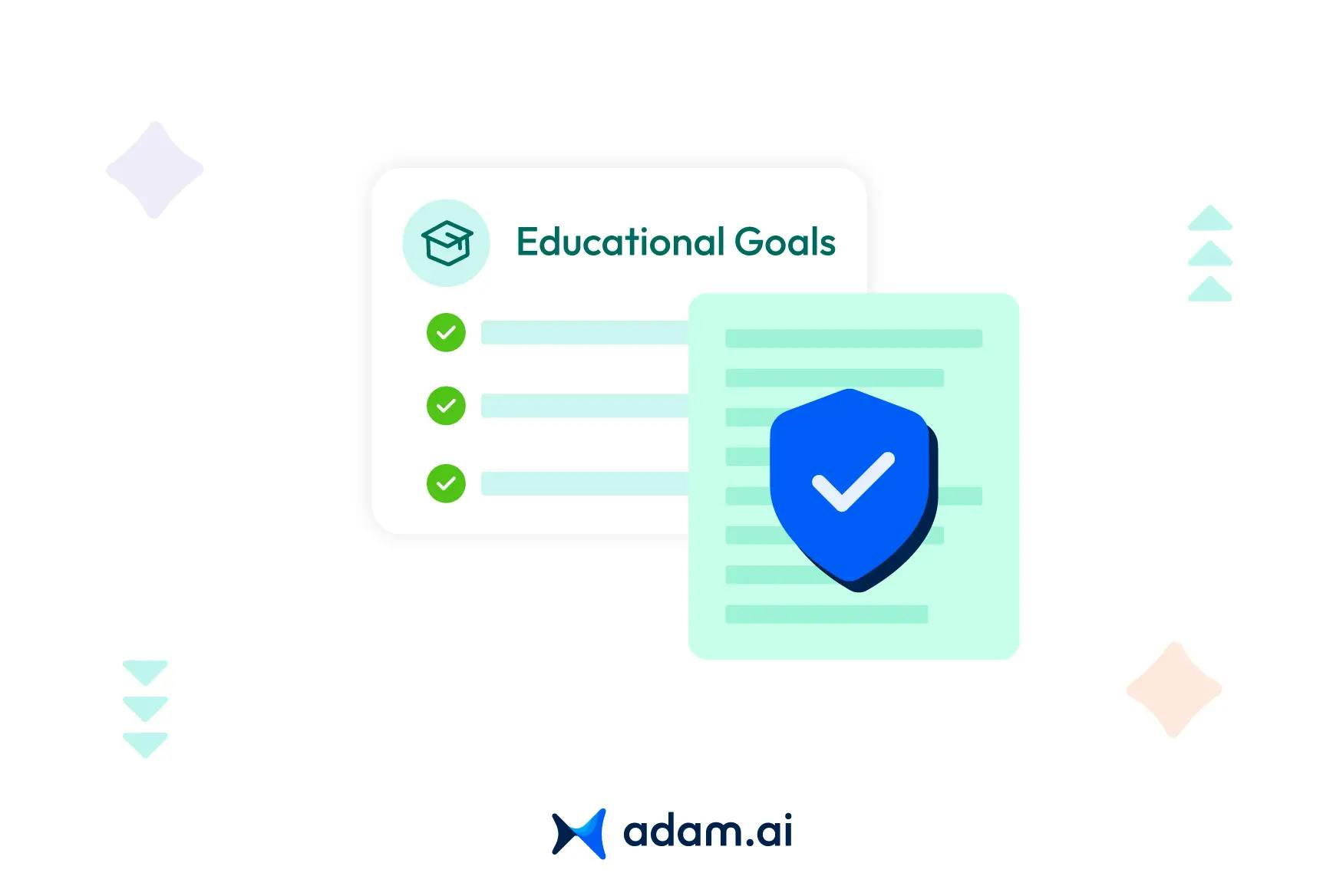
Achieving harmony between educational goals and governance is no easy feat, but it's essential for creating impactful and sustainable institutions. This article explores why aligning governance with educational objectives matters, the challenges involved, and how meeting management platforms can play a pivotal role. With insights on tools, best practices, and measurable impacts, you'll discover actionable strategies to strengthen your institution's governance.
What is the role of governance in aligning educational goals?
Governance serves as the backbone of aligning educational goals by providing a structured framework for decision-making, resource allocation, and policy implementation. Through clear governance structures, institutions can define their vision and mission, ensuring alignment with broader educational objectives and societal needs.
1. Strategic direction
Governance establishes the strategic direction of an institution, outlining goals and ensuring that policies and actions align with the institution’s vision and mission. This alignment helps maintain focus on long-term priorities, such as academic excellence, inclusivity, and innovation.
2. Accountability and transparency
Effective governance fosters accountability by defining roles and responsibilities for stakeholders, from administrators to educators. Transparent processes ensure that every decision aligns with institutional goals and is evaluated against measurable outcomes.
3. Stakeholder collaboration
Governance creates platforms for collaboration among key stakeholders, such as faculty, students, and policymakers. This inclusivity ensures that diverse perspectives shape policies and practices, leading to holistic alignment with educational goals.
4. Policy implementation
By developing and enforcing policies, governance ensures consistent application of standards, from curriculum design to assessment strategies. This consistency is critical for achieving equitable and high-quality education.
Why is aligning educational goals with governance crucial for institutional success?
Aligning educational goals with governance is essential for institutional success because it ensures a cohesive strategy that drives progress and adaptability. Institutions thrive when their governance frameworks and educational objectives work in harmony, fostering a clear direction and accountability.
- Unified vision: Governance alignment helps institutions stay focused on their core mission, avoiding fragmented efforts and ensuring all stakeholders work toward shared goals.
- Improved decision-making: Clear governance processes rooted in aligned educational goals enable timely, data-driven decisions that directly impact academic outcomes and institutional growth.
- Resource optimization: Aligned goals ensure efficient allocation of resources, minimizing waste and directing efforts toward initiatives that matter most for academic and operational success.
- Enhanced accountability: Governance frameworks tied to educational goals promote transparency and accountability, motivating all stakeholders to meet defined objectives and uphold institutional values.
- Adaptability and innovation: In a rapidly changing educational landscape, alignment fosters flexibility, enabling institutions to integrate innovative practices while staying true to their mission.
What are the key challenges in aligning educational goals with governance?
Aligning educational goals with governance is a complex process that often encounters several challenges. These obstacles can hinder the alignment of vision, strategy, and execution, impacting institutional progress.
- Communication gaps: A lack of clear and consistent communication between administrators, educators, and stakeholders can lead to misaligned priorities and fragmented decision-making.
- Resistance to change: Introducing new governance policies or aligning them with evolving educational goals often meets resistance from stakeholders who are accustomed to existing practices.
- Resource constraints: Limited funding, time, and human resources can impede the implementation of governance strategies that support educational goals, leading to prioritization conflicts.
- Diverse stakeholder needs: Balancing the expectations and priorities of multiple stakeholders, like students, faculty, parents, and policymakers, can create conflicting objectives and slow down progress.
- Rapidly changing landscapes: Educational institutions must adapt to dynamic external factors, such as technological advancements and policy reforms, which can disrupt alignment efforts.
- Accountability issues: Without clear roles and responsibilities, it becomes difficult to track progress or hold individuals accountable for achieving aligned goals.
How do meeting management platforms enhance collaboration in educational governance?
Meeting management platforms revolutionize collaboration in educational governance by providing structured, efficient, and transparent tools that align stakeholders and streamline decision-making processes.
- Centralized communication: These platforms offer a unified space where administrators, educators, and board members can collaborate, reducing the chances of miscommunication or overlooked details.
- Enhanced meeting organization: Features like agenda templates, real-time updates, and scheduling ensure that meetings focus on actionable items aligned with institutional priorities.
- Streamlined documentation: Platforms automatically record discussions, decisions, and action items, creating an accessible archive that promotes accountability and ensures continuity across governance cycles.
- Stakeholder engagement: Tools for tagging, commenting, and sharing documents foster active participation, encouraging diverse perspectives in governance discussions.
- Real-time progress tracking: Platforms with task management capabilities help monitor action items, ensuring timely follow-ups and alignment with educational goals.
How can meeting management platforms support strategic alignment in education?
Meeting management platforms play a pivotal role in supporting strategic alignment in education by connecting institutional goals with actionable governance practices. They ensure that every meeting contributes to the broader vision and mission of the institution.
- Structured agenda setting: Platforms allow stakeholders to create goal-oriented agendas that prioritize strategic topics, ensuring meetings focus on aligning decisions with institutional objectives.
- Seamless goal tracking: With features like task assignment and progress monitoring, platforms link discussions to actionable outcomes, keeping all efforts aligned with strategic goals.
- Centralized knowledge base: Meeting platforms consolidate documents, decisions, and historical meeting data in one place, providing context and continuity for governance processes.
- Improved accountability: Assigning tasks with deadlines and tracking progress directly through the platform promotes accountability among stakeholders, ensuring actions are completed in line with educational priorities.
- Data-driven decisions: Platforms often provide analytics and insights that help institutions evaluate meeting outcomes and measure their alignment with strategic goals.
- Cross-departmental collaboration: By connecting different departments through a shared platform, institutions can ensure alignment across teams, fostering a cohesive approach to achieving educational objectives.
What are the best practices for integrating meeting management platforms into educational governance?
Integrating meeting management platforms into educational governance requires a thoughtful approach to ensure their effective adoption and maximize their impact. Here are best practices to guide the process:
1. Define clear objectives
Start by identifying the specific governance challenges the platform will address, such as improving collaboration, streamlining documentation, or enhancing accountability. Align these objectives with the institution's broader goals.
2. Select a platform that fits institutional needs
Choose a platform with features tailored to educational governance, such as agenda management, action tracking, centralized document storage, and real-time collaboration tools.
3. Train stakeholders
Provide comprehensive training for all users, including administrators, educators, and board members, to ensure they understand how to use the platform effectively.
4. Establish governance protocols
Develop guidelines for using the platform, including standardized templates for agendas, meeting minutes, and action tracking. Clear protocols ensure consistency and ease of use.
5. Encourage stakeholder engagement
Leverage features like tagging, commenting, and shared workspaces to foster active participation from all stakeholders, making meetings more inclusive and productive.
6. Integrate with existing systems
Ensure the platform integrates with other tools and systems, such as email, calendars, and student management systems, to create a seamless workflow.
7. Monitor and evaluate performance
Regularly assess how the platform is being used and its impact on governance processes. Use analytics to identify areas for improvement and ensure alignment with institutional goals.
8. Promote transparency and accountability
Use the platform to document decisions, track tasks, and share outcomes with stakeholders, fostering a culture of transparency and accountability.
What are the measurable impacts of using meeting management platforms in education?
Meeting management platforms deliver tangible benefits in educational governance, significantly improving processes and outcomes. Here are the measurable impacts institutions can observe:
- Enhanced decision-making efficiency: Institutions report reduced meeting times due to streamlined agenda setting and focused discussions. Centralized access to relevant materials ensures decisions are made promptly and with clarity.
- Increased accountability: Platforms track task assignments and deadlines, resulting in higher completion rates for action items. This accountability directly translates to better execution of governance decisions.
- Improved collaboration: Stakeholders engage more actively through features like real-time commenting and shared workspaces, fostering a culture of inclusivity and teamwork across departments.
- Better resource management: By reducing the reliance on paper-based documentation and minimizing administrative overhead, institutions save on operational costs and time.
- Greater transparency: Automated meeting minutes and action logs provide a clear record of decisions and discussions, ensuring stakeholders remain informed and aligned.
- Elevated strategic alignment: Institutions experience stronger alignment between educational goals and governance practices, as meeting outcomes are consistently tied to broader strategic priorities.
- Data-driven insights: Analytics and reporting tools within platforms offer valuable insights into meeting effectiveness, participant engagement, and task progress, helping institutions optimize governance practices over time.
How can institutions ensure long-term alignment of educational goals with governance?
Institutions can maintain long-term alignment of educational goals with governance by adopting a strategic, adaptive, and collaborative approach. Here are key strategies:
1. Establish a clear governance framework
Define a governance structure with roles, responsibilities, and decision-making processes that explicitly support the institution’s educational goals. This provides a foundation for consistent alignment.
2. Regularly review goals and policies
Conduct periodic assessments of educational goals and governance policies to ensure they remain relevant to the institution’s mission and adapt to changing needs.
3. Leverage technology
Adopt meeting management platforms to centralize discussions, track decisions, and monitor progress. These platforms ensure alignment by keeping all stakeholders informed and focused on shared objectives.
4. Foster stakeholder engagement
Involve educators, administrators, students, and external partners in governance processes. Open communication and collaboration ensure diverse perspectives are considered, promoting comprehensive alignment.
5. Monitor progress and outcomes
Set measurable objectives and use data-driven insights to evaluate progress toward achieving educational goals. Adjust governance practices based on performance metrics and feedback.
6. Promote a culture of accountability
Encourage accountability by documenting decisions, assigning tasks, and following up on action items. Transparent processes build trust and ensure governance practices align with long-term goals.
7. Adapt to emerging trends
Stay responsive to changes in education, technology, and societal needs. Flexible governance structures enable institutions to incorporate innovations and maintain alignment over time.
How does adam.ai empower educational institutions to align goals with governance?
adam.ai provides educational institutions with a suite of features designed to enhance governance and align it with institutional goals:
1. Agenda management
Streamlined agenda creation ensures meetings remain focused on strategic priorities, helping institutions tackle critical governance issues efficiently.
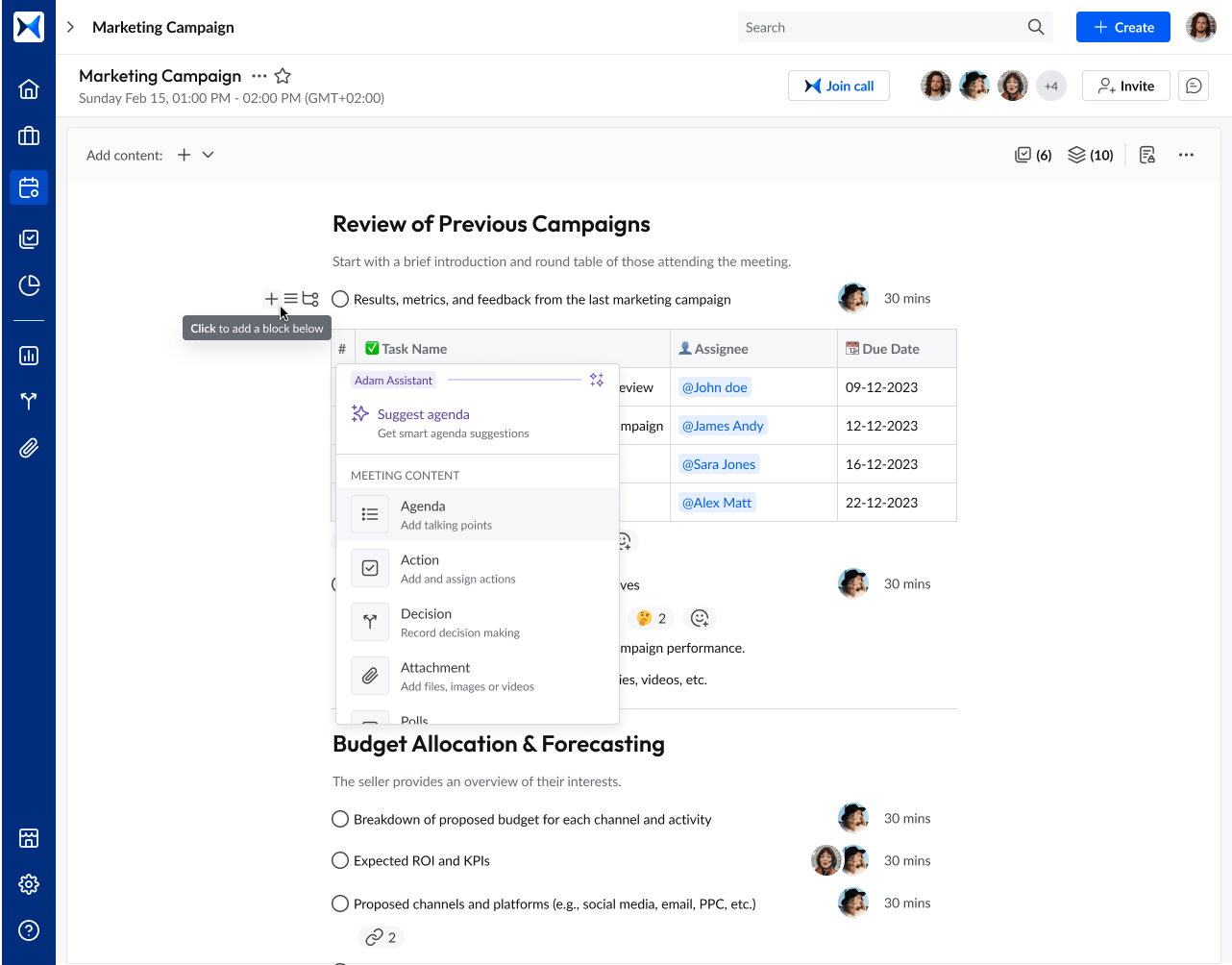
2. Real-time content collaboration
Collaborative tools enable stakeholders to share and edit documents in real-time, fostering seamless communication and aligning discussions with educational objectives.
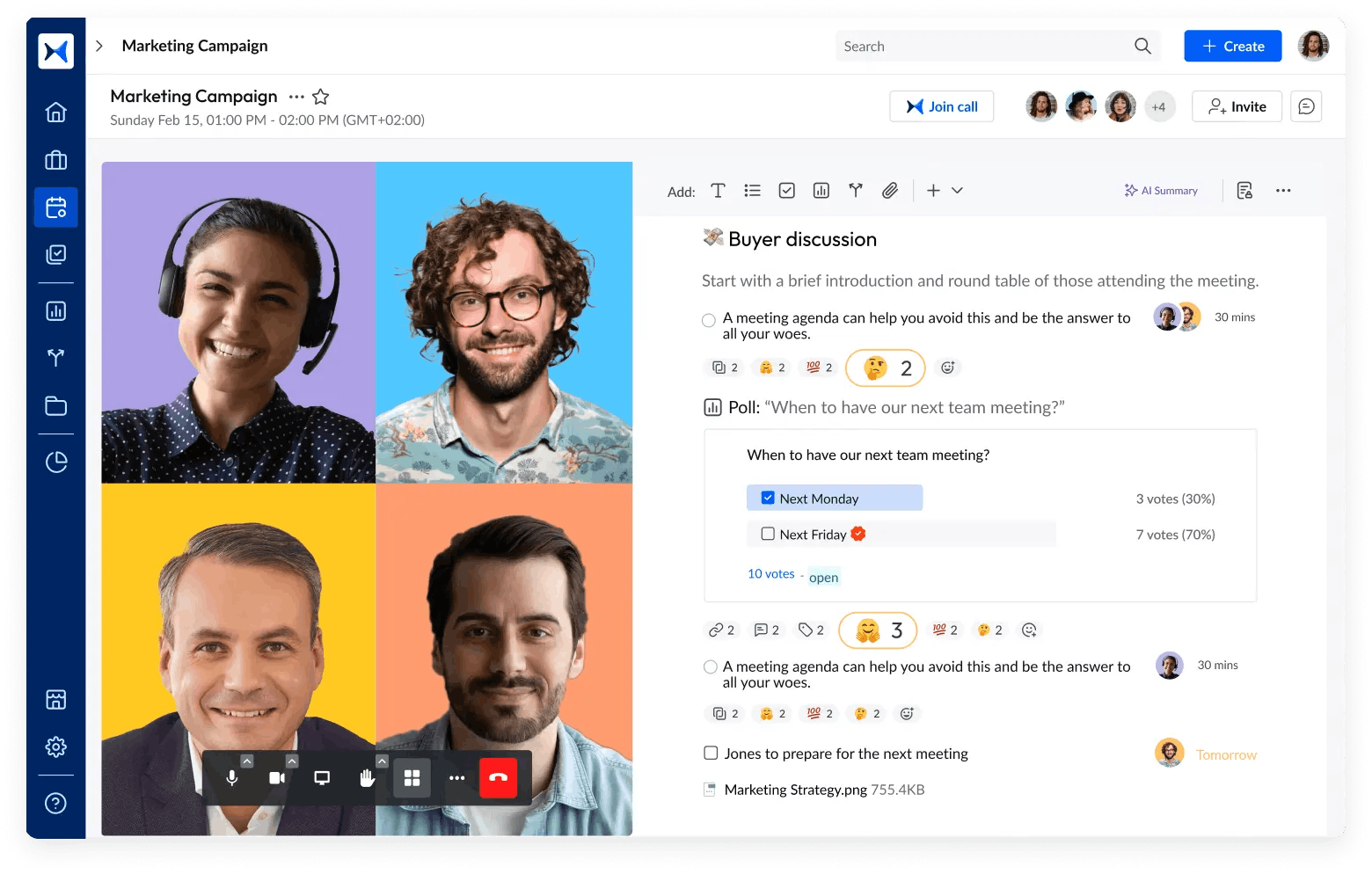
3. Action tracking
By assigning and tracking tasks directly within the platform, adam.ai ensures accountability and follow-through on decisions, aligning governance actions with institutional goals.
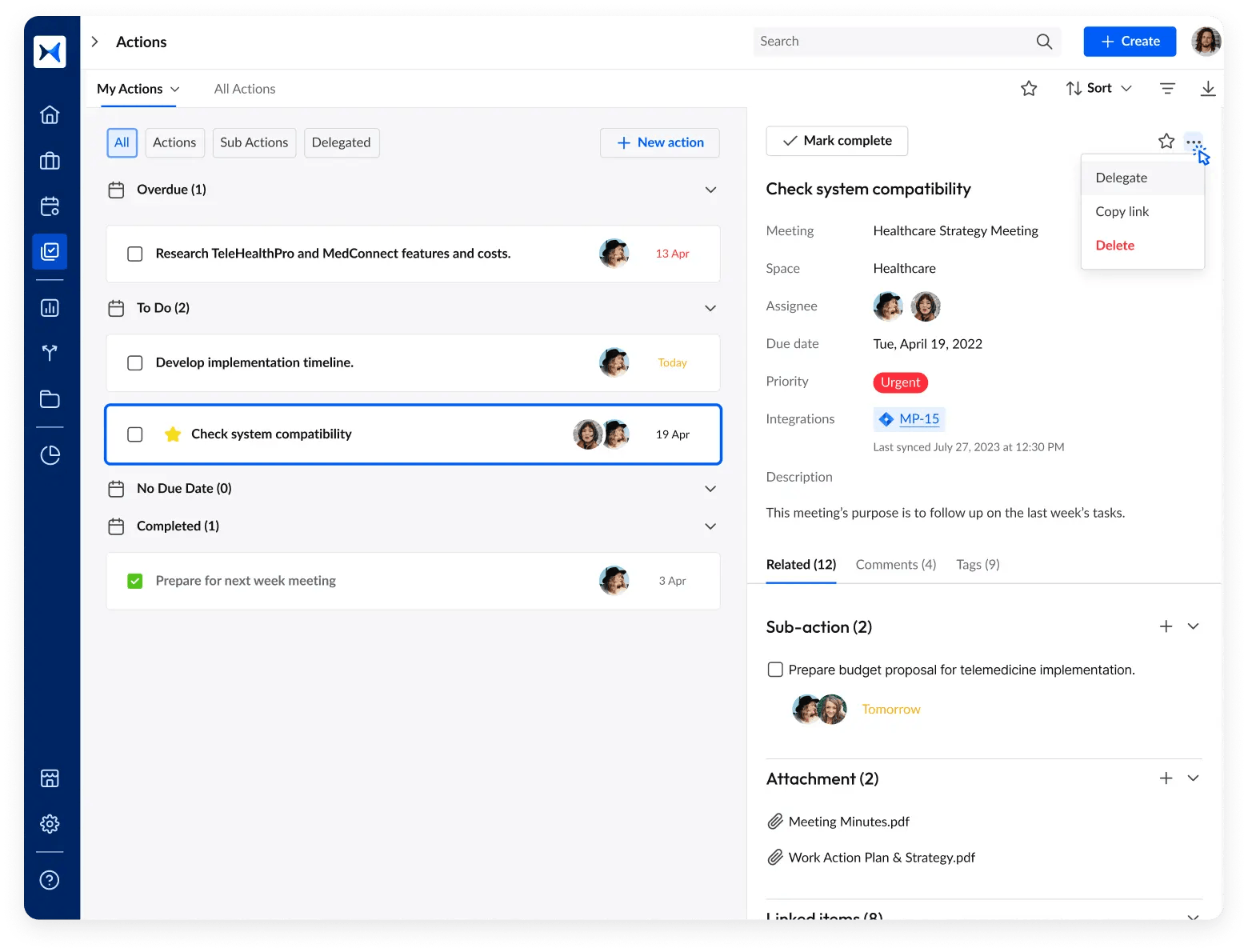
4. Polls for decision-making
Integrated polling allows stakeholders to vote on key issues during meetings, ensuring transparent and inclusive decision-making that reflects institutional priorities.
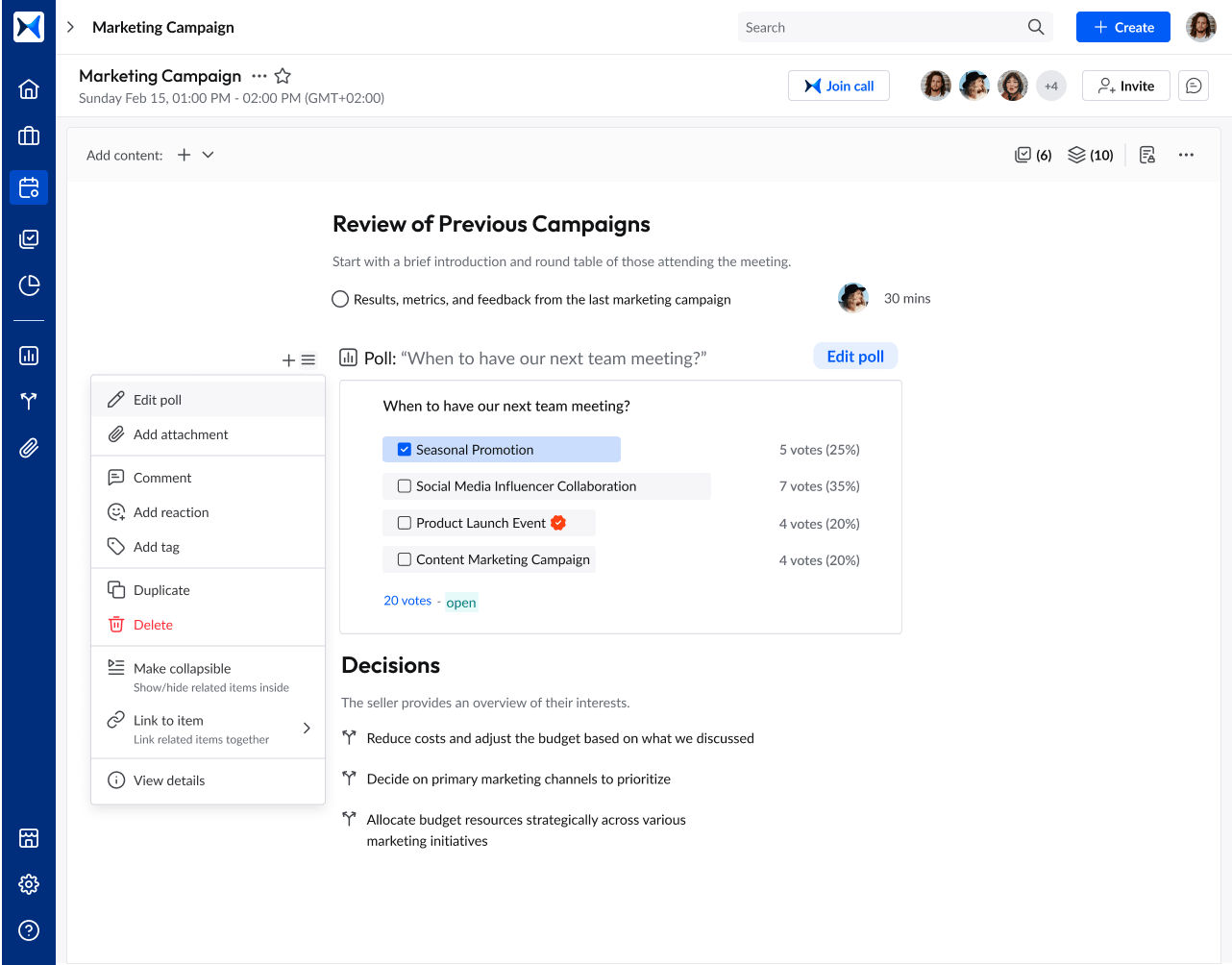
5. Meeting minutes
Automatically generated minutes provide a clear record of discussions and decisions, creating a reliable reference for aligning ongoing governance with strategic goals.
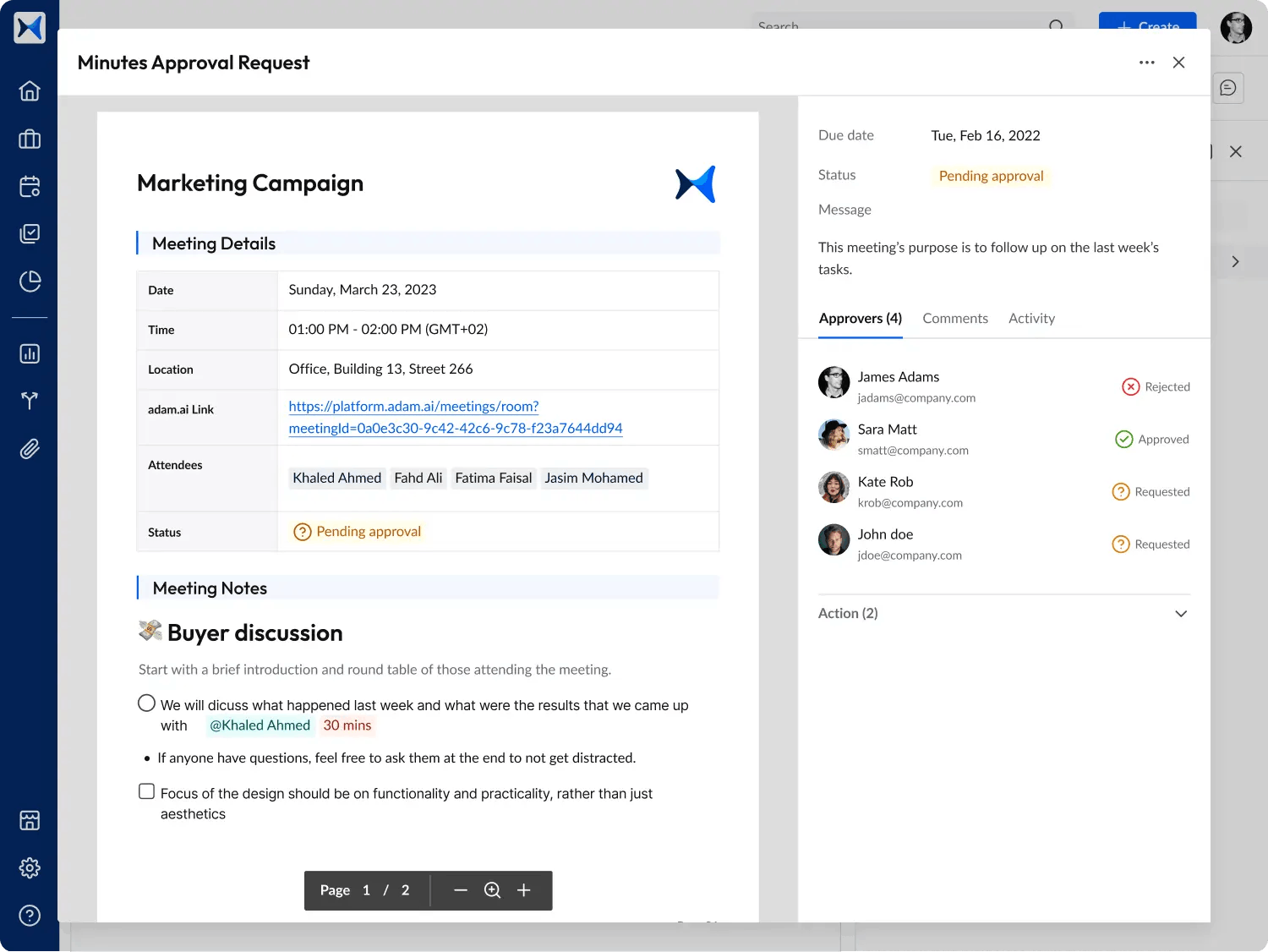
6. Analytical dashboards
Dashboards offer actionable insights into meeting performance and governance efficiency, helping institutions assess and refine their alignment strategies.
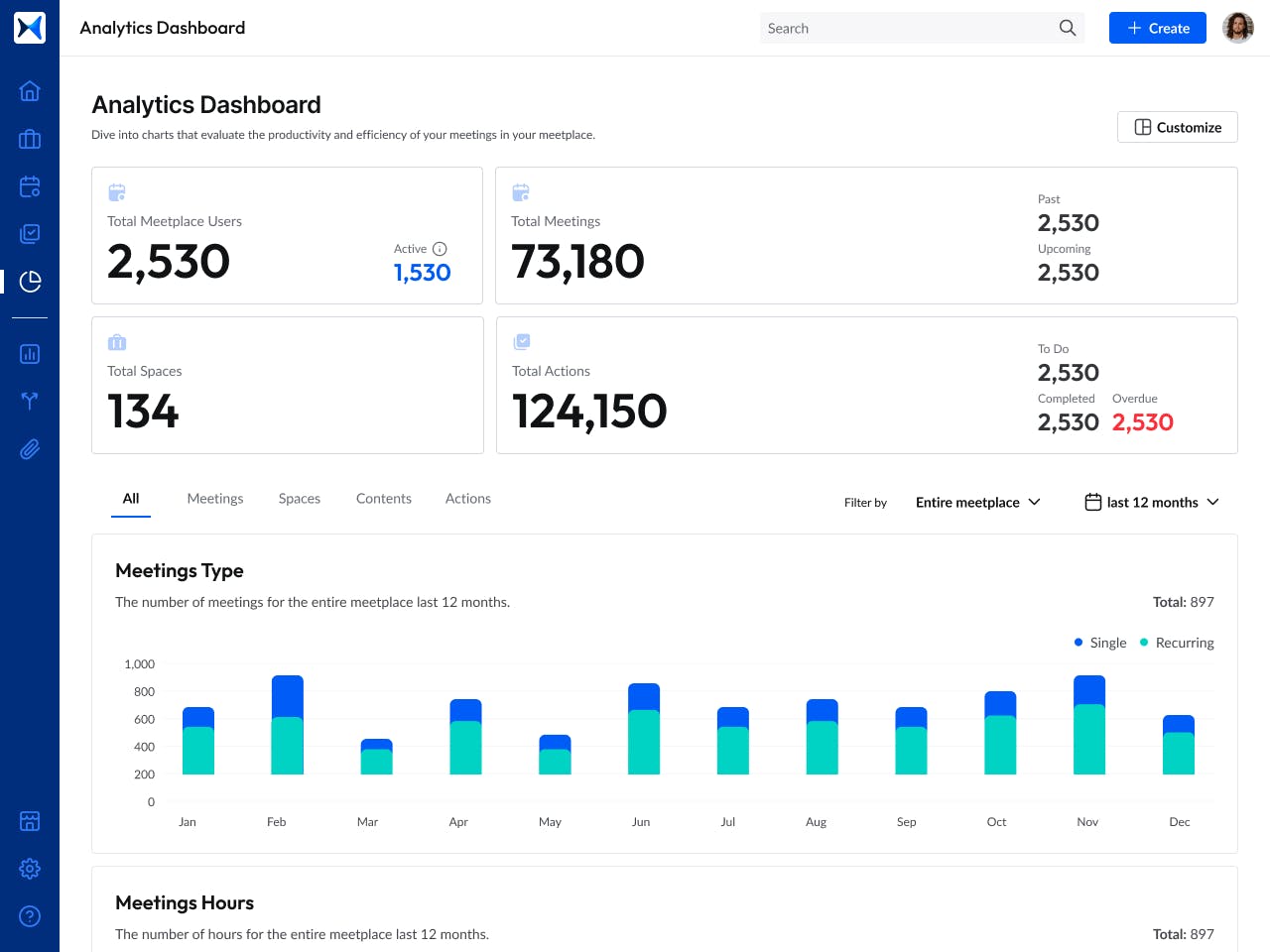
Transform how you conduct critical meetings—From meticulous preparation to effective execution and insightful follow-up, adam.ai integrates comprehensive analytics, full customization, and intuitive interfaces with powerful meeting management tools.
Easy onboarding. Enterprise-grade security. 24/7 dedicated support.
The bottom line
Aligning educational goals with governance is a continuous process that drives institutional success. By leveraging modern tools like meeting management platforms, institutions can enhance collaboration, accountability, and strategic alignment, setting the stage for long-term progress.
And while there may be multiple solutions available, here is why adam.ai is the meeting management software platform you can trust:
- adam.ai is one of Atlassian Ventures' portfolio companies.
- In the meeting management software category on G2, adam.ai has been ranked a leader and a high performer for successive quarters in the past years.
- adam.ai has been included in the Forrester Report in the AI-enabled meeting technology landscape.
- adam.ai is trusted and used by powerful teams and organizations worldwide for all types of critical meetings, like board, committee, project management, and business development meetings.
- And most importantly, adam.ai integrates with your existing workflow, is SOC2 compliant, provides dedicated support and success, and has a free trial option.
Subscribe to adam.ai blog
Stay ahead with the latest insights—get our newest blog posts, tips, and updates sent straight to your inbox.